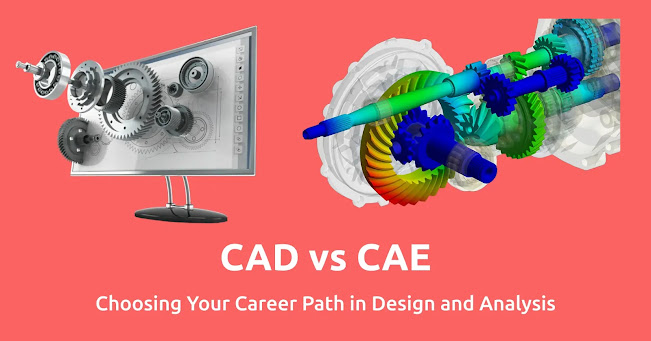If you're considering a career in engineering or a related field, you've likely encountered the terms CAD and CAE. But what do these acronyms really mean, and how do they differ? In this beginner-friendly guide, we'll demystify CAD and CAE, helping you make an informed decision about your career path in the exciting world of design and analysis.
What is CAD (Computer-Aided Design)?
Imagine you're tasked with creating a new product—a car, for instance. CAD is the software and methodology that allows engineers and designers to create detailed digital models of this car. These models are not just pretty pictures; they are rich with data, containing precise measurements, material properties, and geometric information.
Why CAD Matters:
- Designing the Blueprint: CAD helps engineers create the blueprint for a product. It's like sketching a design, but in a digital, highly accurate form.
- Visualization: CAD models allow you to see your product from every angle, zoom in to inspect details, and even simulate its operation.
- Collaboration: CAD facilitates collaboration among design teams, ensuring everyone is on the same page when it comes to the product's design.
Who Should Consider CAD?
If you enjoy the creative process of designing, sketching, and turning ideas into detailed plans, CAD might be your calling. CAD professionals often work on product design, architecture, and various engineering projects.
What is CAE (Computer-Aided Engineering)?
Now, let's say you've designed that car using CAD. CAE comes into play when you want to test how your car performs in different conditions. CAE uses simulations and analysis tools to predict how a product behaves under various stresses, like heat, pressure, or structural forces.
Why CAE Matters:
- Virtual Testing Ground: CAE allows engineers to subject their designs to virtual tests, saving time and resources compared to physical testing.
- Optimization: It helps optimize designs by identifying weaknesses or areas for improvement, leading to more robust and efficient products.
- Safety and Reliability: CAE ensures that products are safe and reliable under real-world conditions, reducing the risk of failures.?
Who Should Consider CAE?
If you're fascinated by understanding how things work, predicting their behavior, and optimizing designs for performance and safety, CAE might be your path. CAE experts are in demand across industries like automotive, aerospace, and structural engineering.

Choosing Your Career Path: CAD or CAE?
To decide between CAD and CAE, consider your interests and career aspirations. If you enjoy creating detailed designs and are drawn to the creative side of engineering, CAD might be the way to go. On the other hand, if you're passionate about analyzing and improving designs to ensure they meet high standards of safety and performance, CAE could be your calling.
It's also worth noting that some professionals work at the intersection of CAD and CAE, using both to bring designs from concept to reality. Ultimately, the choice is yours, and there's no one-size-fits-all answer. The important thing is to follow your interests and passion as you navigate the dynamic field of design and analysis in engineering.




.png)


.png)

0 Comments